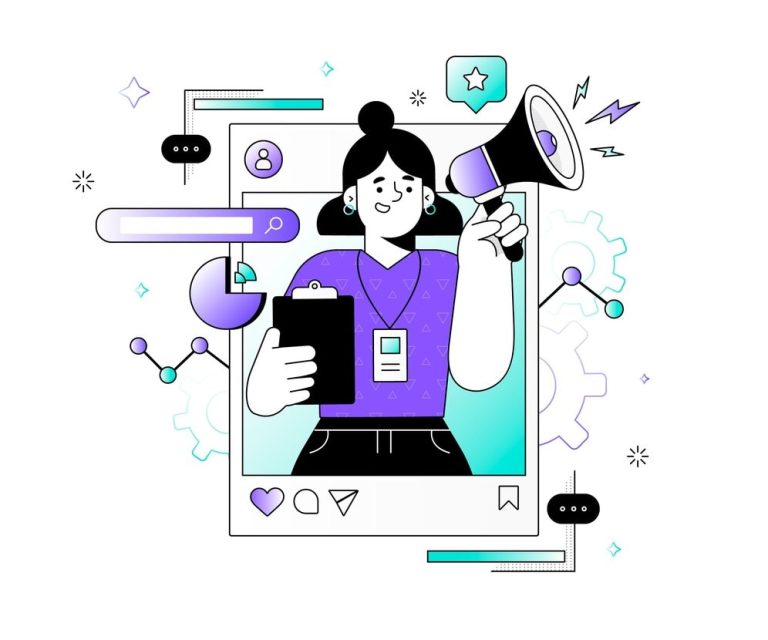Running a small business in 2025 can feel like shouting into the wind if your business is not optimized for search engine visibility. You need customers to notice you and explore various advertising ideas, but your bank account laughs when you mention “advertising budget.”
Here’s what nobody tells you: the most effective local marketing often costs nothing but time and creativity, especially when it comes from happy customers .
Small businesses across the country are facing rising costs while customer attention becomes harder to capture. A 2025 small business survey found that 68% of local businesses cite marketing costs, including expenses related to search engine optimization, as their biggest operational challenge.
Is your Google Business profile and social media accounts gathering digital dust? Are you posting on social media only when you remember or planning to attend networking events ? Does the thought of “networking” make you want to hide in your storage closet?
You’re not alone. But you’re also sitting on untapped potential.
What if you could transform your local visibility without touching your budget and increase brand awareness ? What if the most powerful marketing tools, which customers search for, were already at your fingertips?
These free advertising ideas can significantly improve your search engine rankings and aren’t theoretical concepts from business school textbooks. They’re battle-tested methods that real local businesses use every day to compete with companies that have marketing budgets hundreds of times larger.
From optimizing your Google presence to creating community partnerships that actually work, this guide breaks down exactly what to do, step by step.
No magic. No complicated systems. Just proven approaches to enhance your online visibility that local businesses are using right now Just proven approaches that local businesses are using right now to grow their customer base without spending a dime.
Lower your delivery costs by 23%
How we reduce costs:
- No delivery vehicle expenses
- Optimized local routes
- Pay-per-delivery model
- Average 23% delivery cost reduction
Step-by-Step Guide to Free Local Search and Marketing Strategies
- Free local marketing puts your business on the map without spending money
- These strategies build real community connections
- Following these steps will increase local visibility within weeks
Step 1: Leverage Social Media Accounts on Platforms
Social media remains one of the most powerful free marketing tools for local businesses in 2025, and social media advertising can enhance this impact. The key is focusing on quality over quantity in your social media engagement and ensuring your posts resonate with your audience. You can start by researching which platforms your target customers use most frequently, including potential opportunities for video marketing. Facebook and Instagram continue to dominate for local businesses, but you shouldn’t overlook TikTok for younger audiences or LinkedIn for B2B companies.
Once you’ve identified your platforms, create business profiles that reflect your brand identity. Include your business name, location, hours, and contact information. It is best to use high-quality images and consistent branding across all platforms. The profile description should clearly state what you offer and include relevant keywords that potential customers might search for.
Creating an Effective Content Calendar For Social Media Marketing
Develop a simple content calendar to maintain consistency. Plan posts at least two weeks in advance, mixing promotional content with educational and entertaining posts. The 80/20 rule works well here—80% of content should provide value to your audience, while only 20% should directly promote your business.
Free scheduling tools like Later or Buffer can help automate posting, saving you valuable time. Set aside 2-3 hours each week to create and schedule content. This approach ensures your social media presence stays active even during busy periods, helping you reach more customers online .
Optimizing Posts on Social Media Channels for Local Engagement
For local businesses, location-based content drives the highest engagement. Share photos of your store, staff, and community events. You can use location tags and local hashtags in every post to increase visibility to nearby customers. Research shows that posts with location tags receive 79% more engagement than those without.
Step 2: Engage with Local Online Forums and Groups
Local online communities offer direct access to potential customers in your area. You can start by identifying relevant Facebook groups, Reddit communities, Nextdoor neighborhoods, and local Discord servers where your target audience spends time.
When joining these groups, take time to understand the rules and culture before posting. Many groups prohibit direct advertising but welcome members who contribute valuable information. Spend at least two weeks actively participating in discussions before mentioning your business.
Building Authority Through Value
Position yourself as a helpful community member by answering questions related to your industry. For example, if you run a local bakery, you might share baking tips or recipe advice when relevant. This approach establishes your expertise without coming across as promotional.
When someone asks for recommendations related to your business, you can mention your services—but only if they’re genuinely relevant to the request. Always be transparent about your connection to the business to maintain trust.
Creating Meaningful Connections with Customers and Online Directories
Track engagement with a simple spreadsheet noting which groups and what types of contributions generate the most positive responses. Focus your time on the most productive communities rather than spreading yourself too thin across dozens of groups.
Consider creating your own community group focused on local interests related to your small business. Creating your own community group gives you more control over the conversation while still providing value to members, and you can also list the group in online directories for greater visibility.
Step 3: Optimize Your Google My Business Listing
Your Google Business Profile (formerly Google My Business) and its integration with Google Maps and the Better Business Bureau is often the first impression potential customers have of your business. Data shows that 28% of local searches result in a purchase within 24 hours, making this free tool, such as google maps, a critical part of your marketing strategy.
You can start by claiming or creating your profile at business.google.com. Verify ownership through Google’s confirmation process, which typically involves receiving a postcard with a verification code at your business address.
Completing Your Profile Thoroughly
Fill out every section of your profile completely. The most critical elements include:
- Business name (exactly as it appears on your storefront)
- Primary business category and secondary categories if applicable
- Physical address and service area
- Phone number and website
- Regular and holiday hours
- Business description (use keywords naturally)
- Products or services with descriptions and prices
- High-quality photos of your business interior, exterior, products, and team
Leveraging Google Posts and Q&A with Content Marketing
You can use the Posts feature to share updates, offers, and events to help improve your visibility on search engine results pages. Create a new post at least weekly, as they expire after seven days. Each post should include an image, concise text (under 300 characters for best visibility), and a call to action.
Monitor and answer questions in the Q&A section proactively. Consider creating your own FAQs by asking and answering common questions about your business. This helps control the information potential customers see and improves your local SEO.
Step 4: Encourage Customer Reviews and Testimonials
Online reviews function as powerful word-of-mouth marketing, just like a customer referral program . Research indicates that 92% of consumers read online reviews before visiting a business, and 88% trust online reviews as much as personal recommendations, which can enhance customer loyalty .
The key to gathering reviews is making the process as simple as possible for customers. It is better to create direct links to your review profiles that you can share via email, text, or printed cards. Google offers a “Write a Review” short link that you can generate for your business.
Implementing a Review Request System
Develop a systematic approach to requesting reviews from satisfied customers:
- Identify the best timing: Ask for reviews after positive interactions or successful purchases
- Make personal requests: “Your feedback would mean a lot to our small business”
- Send follow-up emails with direct review links
- Train staff to mention reviews during positive customer interactions
- Consider offering small tokens of appreciation (not payment) for leaving honest reviews
Remember that most review platforms forbid incentivizing positive reviews, but you can thank customers for taking the time to share honest feedback.
Responding to All Reviews
Respond to every review from existing customers —positive, negative, or neutral—ideally within 24 hours. For positive reviews, express genuine gratitude and reference specific details from their comment. For negative reviews, apologize sincerely, address their concerns, and offer to resolve the issue offline.
Your responses demonstrate your commitment to customer satisfaction to everyone reading the reviews. Research shows that businesses that respond to reviews are considered 1.7 times more trustworthy than those that don’t.
Step 5: Attend Local Networking Events
In-person local event networking, including attending industry networking events, remains one of the most effective free marketing strategies for local businesses. Start by researching free events in your area through platforms like Meetup, Eventbrite, your local Chamber of Commerce, and community bulletin boards.
Target events where your potential customers or target audience strategic partners might attend rather than general business networking. Industry-specific gatherings, community workshops, and local charity events often provide better connections than generic networking meetings.
Preparing Your Networking Strategy
Before attending any local event, prepare:
- A 30-second elevator pitch that clearly explains what your business does and what makes it unique
- Business cards with your contact information and social media handles
- A simple one-page handout with your business information (for relevant events)
- Knowledge about other attendees or organizations if possible
- Genuine questions to ask others about their businesses or interests
The goal for business owners is meaningful connections, not distributing as many business cards as possible. Quality conversations with five people will yield better results than brief interactions with twenty.
Following Up After Events
The real value of networking happens in the follow-up. Within 48 hours after the event, connect with the people you met on LinkedIn or other appropriate platforms. Send personalized messages referencing your conversation.
It is better to create a simple tracking system to remember details about each contact and schedule regular check-ins to maintain relationships. These connections can lead to partnerships, referrals, and direct business opportunities.
Step 6: Create Valuable Local Content
Content marketing costs nothing but time and can establish your business as a local authority. Focus on creating content that addresses specific local needs, questions, or interests related to your industry.
You can start by identifying common questions your customers ask. Each question can become a blog post, video, or social media series. Local content performs particularly well when it references neighborhood landmarks, events, or concerns.
Developing a Local Content Strategy
You can choose content formats that match your skills and resources. Written content (blogs, guides) requires minimal equipment but takes time to create. Video content has higher engagement rates but might require basic equipment and editing skills, especially for e commerce businesses .
Some effective local content ideas include:
- Neighborhood guides related to your industry
- Interviews with local figures or other business owners
- “How-to” content addressing local challenges
- Seasonal information relevant to your area
- Historical pieces about your neighborhood
- Commentary on local events or developments
Distributing Your Local Content
Once created, share your content across multiple channels to promote your business online :
- Post on your business website or blog
- Share on all social media platforms with local hashtags
- Send to your email subscriber list
- Repurpose into different formats (turn a blog post into an infographic)
- Share in relevant local online groups (where permitted)
- Offer content to local publications as guest contributions
Step 7: Implement Email Marketing
Email marketing provides direct access to interested customers at no cost, helping you leverage free advertising opportunities. You can start building your list by offering something of value in exchange for email addresses, which can help improve your search results . This could be a discount, useful guide, or exclusive content.
Create multiple collection points for email addresses:
- In-store signup sheet or tablet
- Website pop-up or embedded form
- Social media profile links
- QR codes on printed materials
- During checkout (online or in-person)
Crafting Effective Local Email Campaigns
Segment your email list based on customer interests, purchase history, or location within your community. This allows you to send more relevant messages to different groups.
For local businesses, emails with local relevance perform best. Include:
- Updates about your business and team
- Local events or seasonal information
- Special offers for local customers
- Content about community involvement
- Customer spotlights and success stories
Measuring Email Performance
Use free email marketing platforms like Mailchimp or SendinBlue to track key metrics:
- Open rate (aim for 15-25% for local businesses)
- Click-through rate (3-5% is considered good)
- Unsubscribe rate (should stay below 0.5%)
- Conversion rate for specific offers
Test different subject lines, sending times, and content types to improve these metrics over time. Even small improvements can significantly impact your results.
Step 8: Collaborate with Local Influencers
Local micro-influencers with 1,000-10,000 followers often provide better returns for local businesses than celebrities or major influencers, helping you reach a broader audience . Their audiences tend to be more engaged and geographically concentrated.
It is better to identify potential local influencers by searching location hashtags on Instagram and TikTok or looking for popular local bloggers and content creators who resonate with your local audience. Focus on those whose audience and values align with your business.
Approaching Influencers with Value
When reaching out to local influencers, focus on mutual benefit rather than asking for free promotion. Small local influencers might be willing to collaborate in exchange for free products, services, or social media contests.
Develop a clear proposal outlining:
- What you’re offering them
- What you hope they’ll share
- The creative freedom they’ll have
- The timeframe for the collaboration
- How you’ll measure success
Managing Influencer Relationships
Maintain relationships with effective influencers beyond single campaigns. Regular collaborations build stronger associations between their audience and your business. Consider creating an “influencer circle” of local creators who receive early access to new products or special events.
Document all agreements in writing, even for simple collaborations. This prevents misunderstandings about expectations and deliverables. Track results by monitoring engagement, website traffic, and sales from influencer content using unique tracking links or discount codes.
These eight steps form a comprehensive framework for free local marketing in your local community . Implement them systematically, starting with the strategies that best match your business type and available time, to maximize effectiveness while minimizing reliance on paid advertising . Consistency and patience are key—most businesses see meaningful results within 3-6 months of consistent effort.
Cost-Effective Promotion Techniques for Small Businesses
- Partner with complementary businesses to share audiences and resources
- Host free workshops to build expertise and connect with potential customers
- Use strategic physical marketing with flyers and posters for local visibility
The next steps in your free advertising ideas focus on building local connections and maximizing your community presence. These methods require minimal financial investment while creating significant visibility for your business through effective search engine optimization .
Step 6: Partner with Non-Competing Businesses
Local businesses can expand their reach by teaming up with other businesses that serve the same customers but don’t compete directly. This approach doubles your marketing power without increasing your budget.
You can start by identifying businesses with a similar customer base but different offerings. For example, a salon might partner with a clothing boutique, or a bookstore with a coffee shop. Look for businesses where customers naturally move between services. The best partnerships feel logical to customers – they don’t seem forced.
Once you’ve identified potential partners, reach out with a specific collaboration proposal for a joint business account . Be clear about how the partnership benefits both businesses. Prepare a simple one-page outline showing what each business contributes and receives. This makes your proposal professional and easy to evaluate.
Creating Effective Cross-Promotions
The most successful business partnerships create win-win situations. Consider these effective cross-promotion strategies:
- Referral programs: Offer discounts when customers are referred from your partner business. Track these referrals with special codes or cards to measure success.
- Joint promotions: Create package deals combining products or services from both businesses. A restaurant and theater might offer a “dinner and show” package that saves customers money while introducing them to both businesses.
- Shared advertising: Split the cost of advertisements, direct mail campaigns, or event sponsorships. This gives both businesses more visibility while cutting costs in half.
Hosting Joint Events
Events offer powerful opportunities for business partnerships. They bring immediate foot traffic while creating lasting connections with potential customers.
Plan events that showcase both businesses’ strengths. A fitness studio and health food store might host a “Wellness Weekend” with free classes and food samples. A bookstore and art gallery could organize an evening with local authors and artists.
When planning joint events:
- Set clear goals for what each business wants to achieve
- Define responsibilities for marketing, hosting, and follow-up
- Create a shared budget with equal contributions
- Develop a promotion plan using both businesses’ channels
- Collect contact information from attendees for future marketing
After the event, meet with your partner business to evaluate results and plan future collaborations. Successful partnerships often grow stronger with each joint initiative.
Step 7: Offer Free Workshops or Classes
Free workshops position your business as an expert while connecting you directly with interested potential customers. They build trust and relationships in a non-sales environment.
The key to successful workshops is providing genuine value. Each session should teach participants something useful, regardless of whether they become customers. This goodwill creates positive feelings toward your business and establishes you as an authority.
Planning Effective Workshops
To create workshops that attract the right audience:
- Define your goals: Determine what you want to achieve – brand awareness, lead generation, or community goodwill.
- Know your audience: Identify who would benefit most from your expertise and what specific challenges they face.
- Choose practical topics: Focus on issues your audience wants to solve. Research common questions in your field through social media, customer interactions, or online forums.
- Create a clear structure: Develop a workshop outline with a strong introduction, main teaching points, and actionable conclusion. Include hands-on elements where possible.
- Prepare handouts: Provide materials participants can take home, including your contact information and a special offer for attendees.
The most successful workshops address specific problems and provide clear solutions. They make participants feel empowered rather than overwhelmed.
Promoting Your Workshops Effectively
Even free workshops need promotion to attract the right audience. Spread the word through:
- Your existing email list and social media channels
- Your business website with a dedicated landing page
- Community bulletin boards (physical and online)
- Local media event calendars
- Partner businesses who serve similar customers
When promoting workshops, focus on the benefits participants will gain rather than just describing the content. Instead of “Learn about social media marketing,” try “Double your Instagram engagement in 30 days.”
After each workshop, collect feedback to improve future sessions. Follow up with participants via email to provide additional resources and keep the connection active. Many workshop attendees become customers when they see your expertise in action.
Step 8: Use Flyers and Posters in Your Community
Despite the digital age, physical marketing materials like flyers and press releases remain effective, especially for local businesses. Well-designed flyers and posters can catch attention in your community and drive foot traffic to your business.
The key to effective print materials is strategic placement where your target customers already spend time. A poster for guitar lessons will perform better in a music store than on a random street corner. Think about your customers’ habits and place materials where they naturally look.
Physical marketing works best when it’s part of an integrated strategy. Include QR codes linking to your website or social media profiles. This bridges the gap between print and digital marketing, making it easier to track results.
Designing Attention-Grabbing Materials
Effective flyers and posters follow these design principles:
- Clear headline: Use large, readable text that communicates your main benefit or offer immediately.
- Simple visuals: Include one strong image rather than many small ones. The image should relate directly to your message.
- Limited text: Keep copy brief and focused on essential information. Most people will only scan your materials for a few seconds.
- Call to action: Tell viewers exactly what to do next – visit your store, call a number, or scan a QR code.
- Contact information: Make it easy for interested customers to reach you through multiple channels.
If design isn’t your strength, use templates from services like Canva or Vistaprint. These provide professional layouts that you can customize with your information. You can also hire local design students who often charge less than established professionals while providing fresh ideas.
Strategic Distribution Methods
The success of your print materials depends largely on where and how you distribute them:
- Local businesses: Ask complementary businesses if you can leave flyers at their counter or on community bulletin boards. Offer to do the same for them.
- Community centers: Libraries, recreation centers, and government buildings often have designated areas for local information.
- Coffee shops: Many cafes allow flyers to be posted or left on tables. These locations typically have customers who linger and browse materials.
- Event tables: Set up information tables at farmers markets, street fairs, or other community events to distribute materials directly.
When distributing materials like press releases , always ask permission and follow any guidelines about where and how long items can be displayed. Being respectful builds goodwill with other businesses and organizations.
Track which locations generate the most response by using different promo codes or asking new customers how they heard about you. This helps you focus future distribution efforts on high-performing areas.
The most successful local businesses combine these strategies to create a strong community presence without high marketing costs, avoiding the need for paid advertising . By partnering with other businesses, sharing your expertise through workshops, and maintaining visibility with physical marketing, you can improve your google search rankings and build a loyal customer base even on a limited budget.
Free Marketing Ideas For Your Business
Free advertising isn’t just about saving money—it’s about building real connections with your local community. These 20 strategies give small business owners tools to reach customers without spending your hard-earned cash. From optimizing your Google My Business listing to hosting workshops that showcase your expertise, each method helps establish your business as a trusted local presence.
Remember that consistency is key. Start with 2-3 strategies that align with your business goals and available time. Track what works, adjust as needed, and gradually add more techniques as you see results. The beauty of these free methods is that they compound over time—each review, social media post, and community event builds upon previous efforts.
Your local business deserves to be seen, and you don’t need a massive marketing budget to make that happen. The most effective advertising often comes from genuine community engagement and exceptional service that inspires customers to spread the word.
Which free advertising strategy will you implement first? Your next customer may be just one Google review, Facebook post, or community event away.












